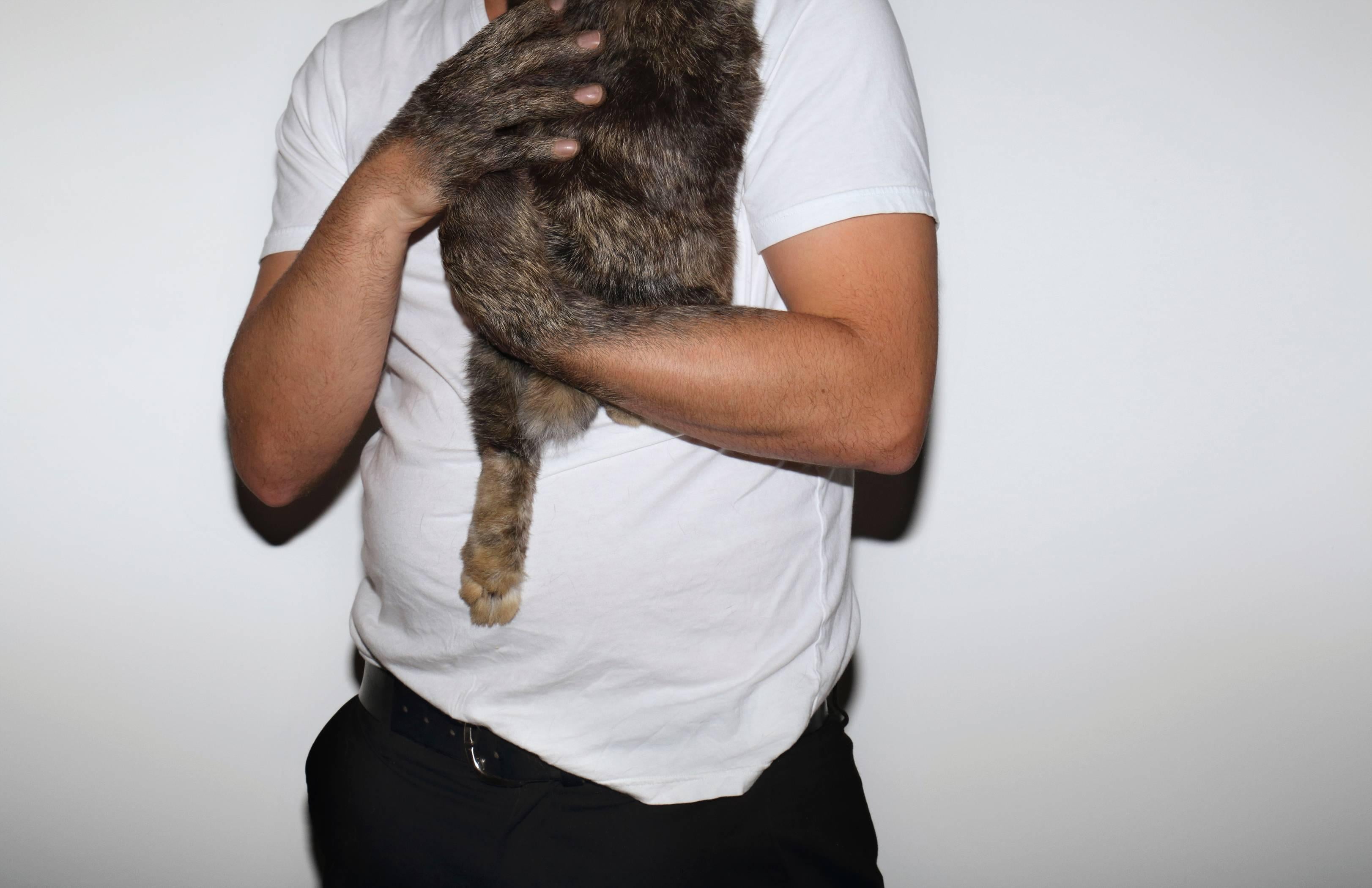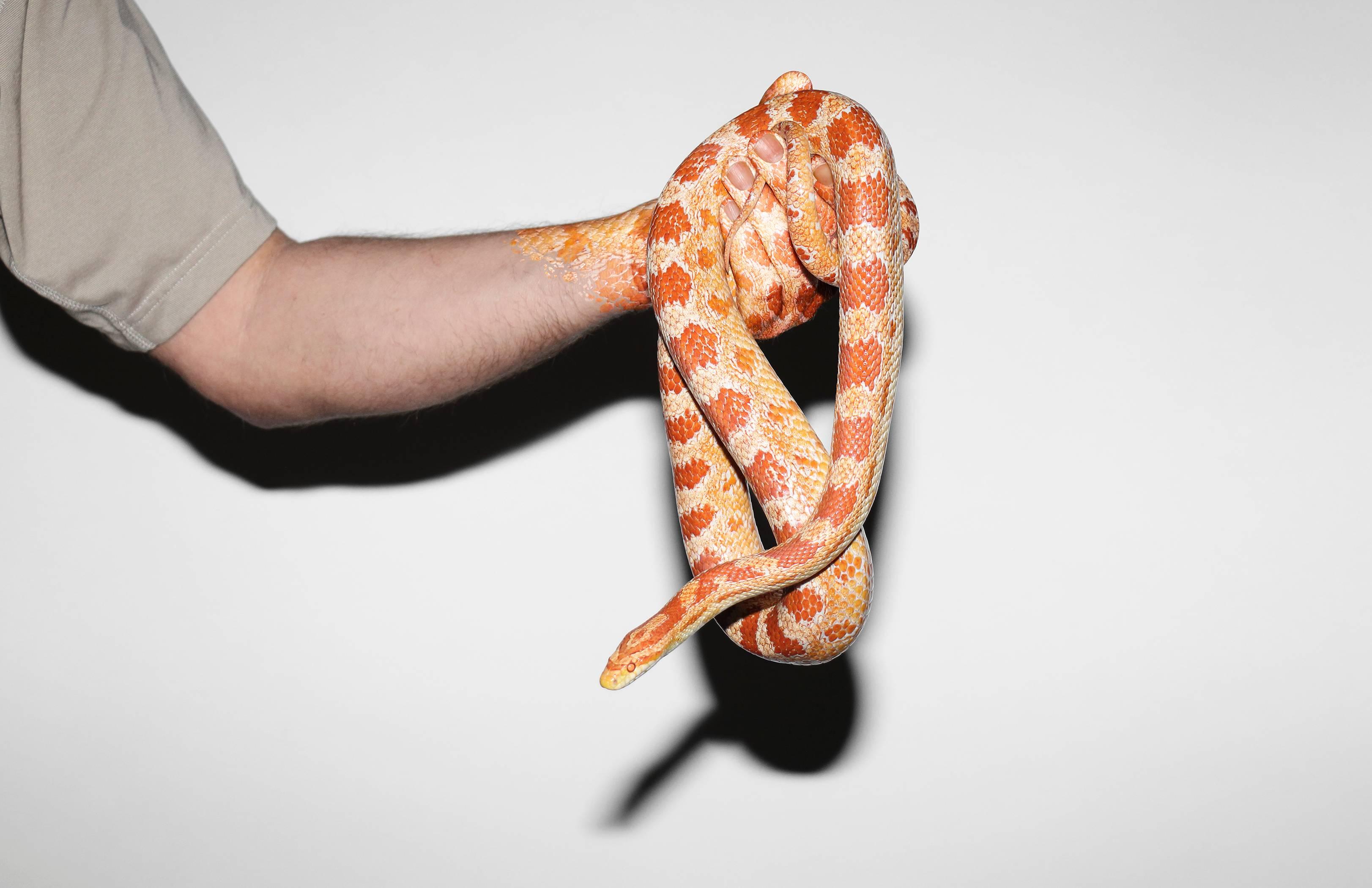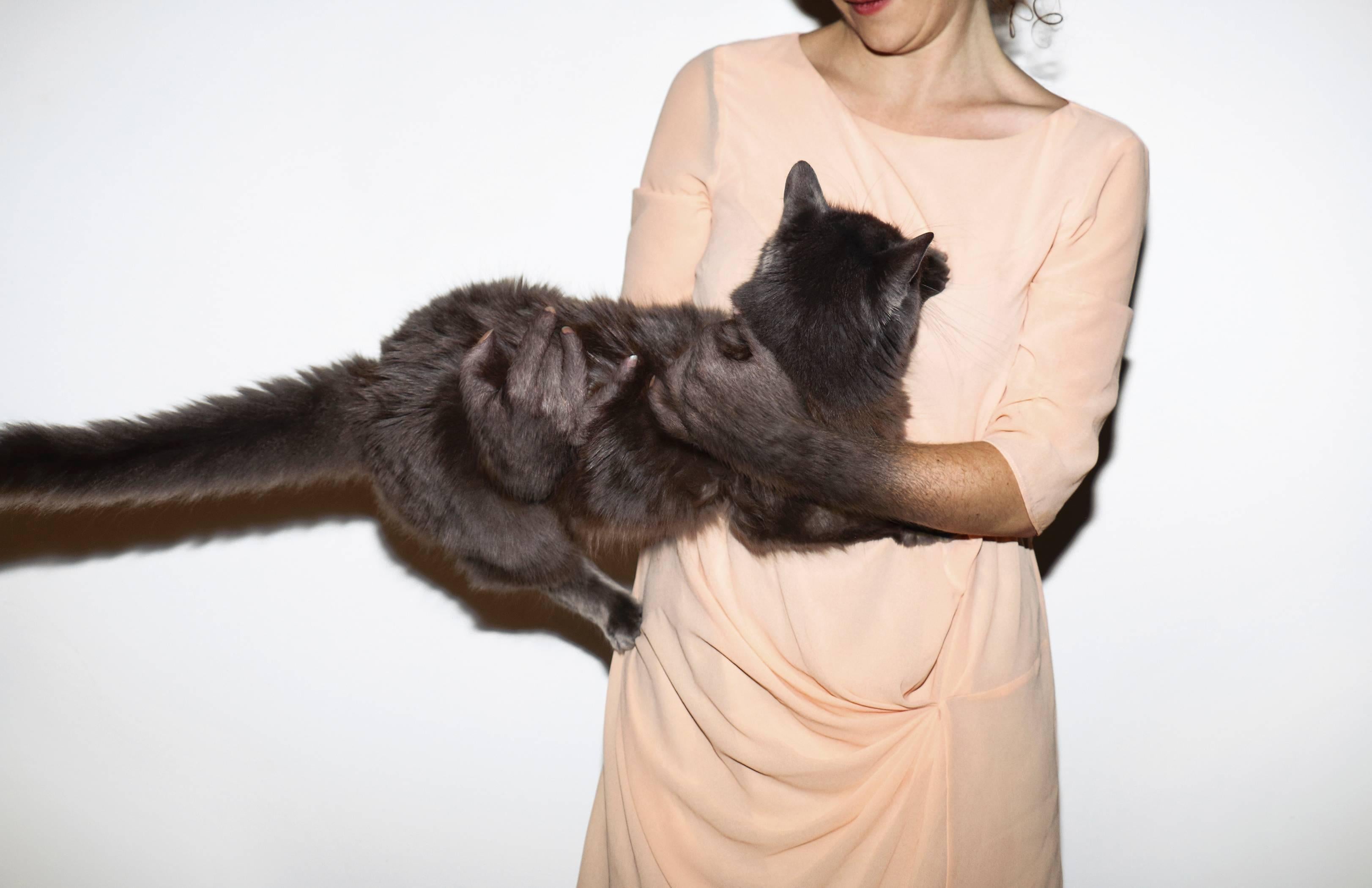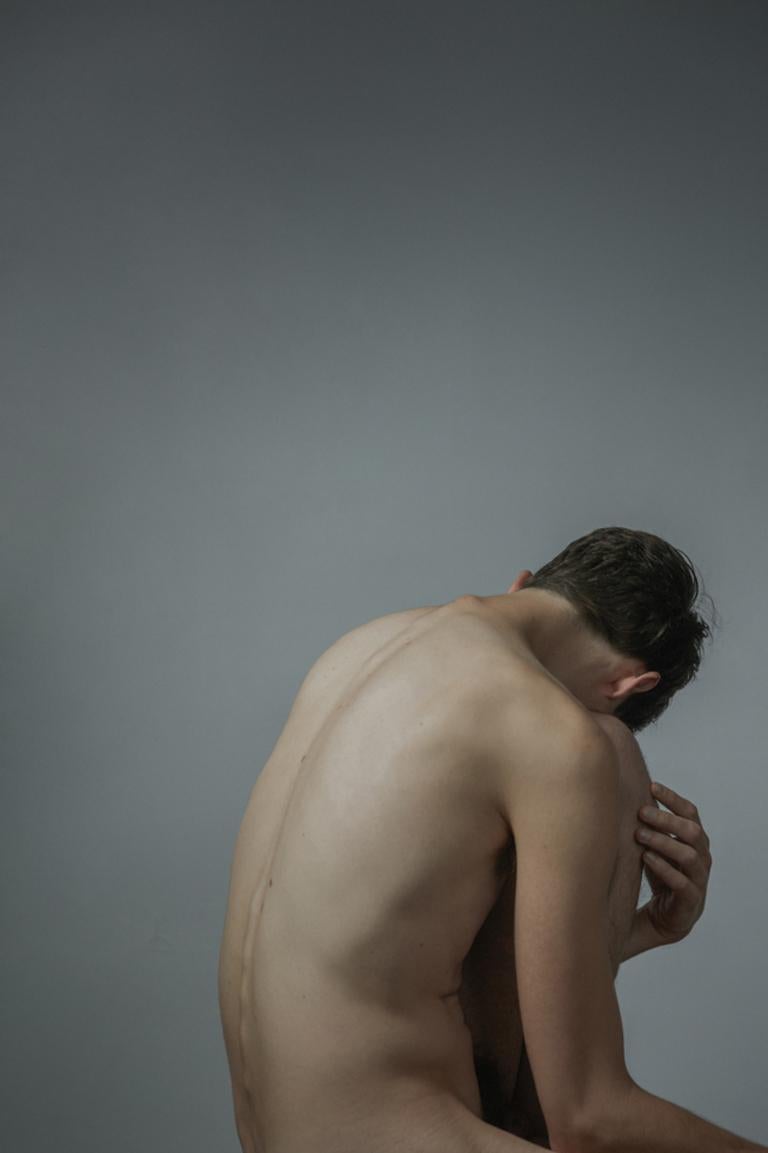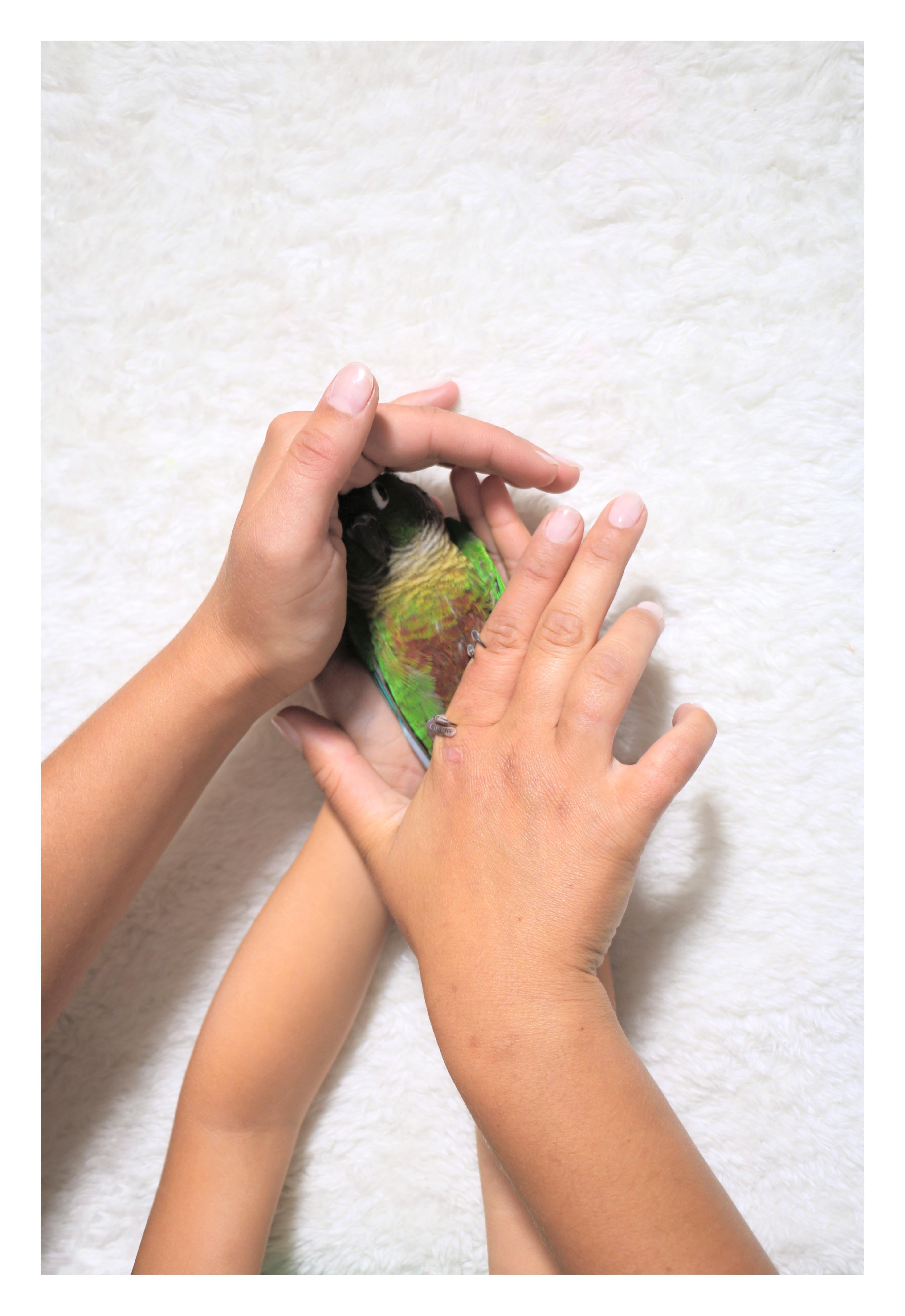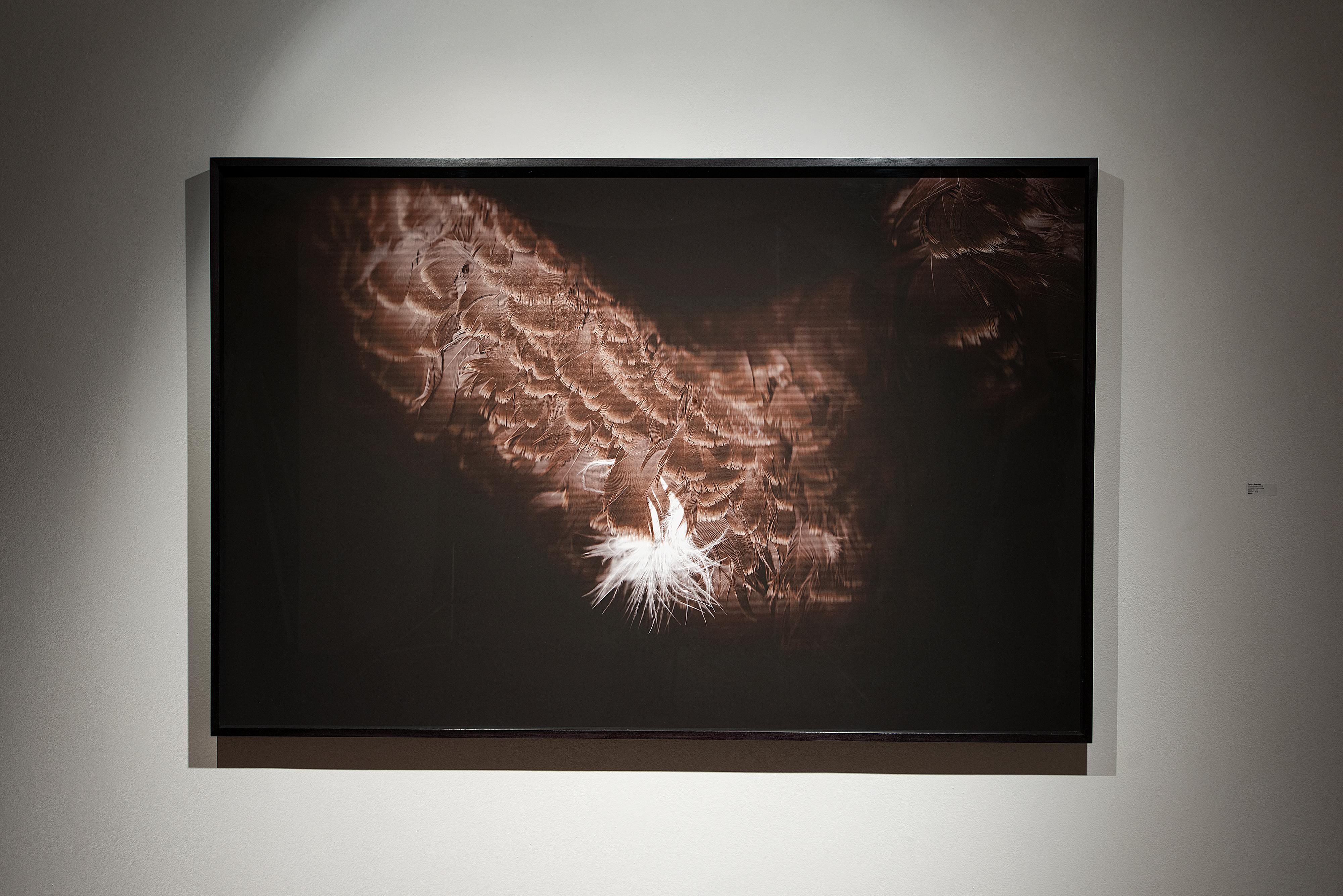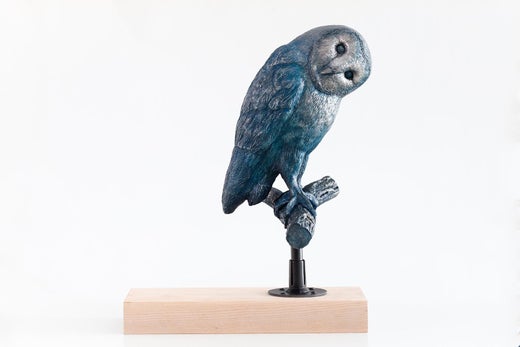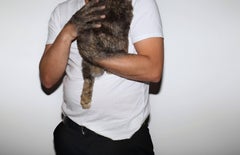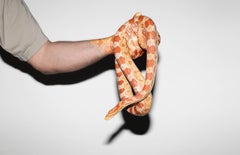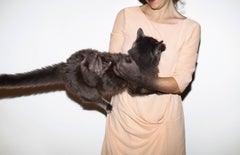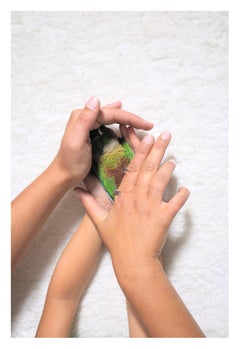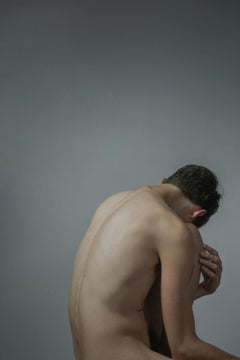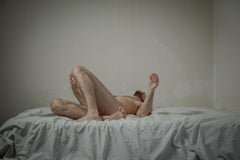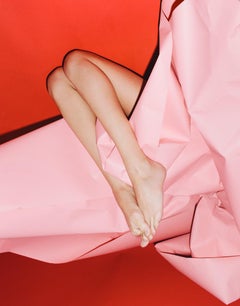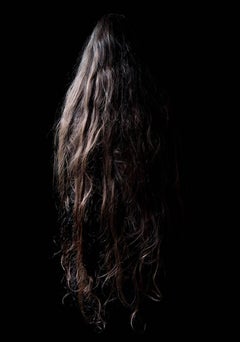Want more images or videos?
Request additional images or videos from the seller
1 of 5
Karine PayetteEntre nous IV2016
2016
$2,300
£1,736.75
€2,001.41
CA$3,246.28
A$3,578.95
CHF 1,872.39
MX$43,907.03
NOK 23,569.68
SEK 22,041.37
DKK 14,946.60
About the Item
Text by Nancy Webb
It’s Saturday night and Karine Payette is in her studio. We meander into a conversation about the dog she used to have and her soft spot for German shepherds, an intensely obedient and loyal breed in a deceivingly wolf-like package. Payette’s most recent series of photographs, sculptures and video work seem to speak directly to this preoccupation with the multifaceted nature of human-animal relationships—the dialogues of control, intimacy, violence and domestication that subtly take place on an interspecies level.
Her workspace is part laboratory, part prop closet—a bowl of fur sits not far from her computer. Somehow in this bright, open, chemical-clean scented room, Payette conjures wildness. We are taken to a strange place, the borderlands of interspecies mingling. At one extreme of the animal-human dynamics scale is the stalwart compliance of a professionally trained German shepherd who responds to commands with robotic precision. Here, power is comfortably held by an off-screen voice, animality pacified by a set of linguistic prompts. At the other end of the scale is a sculpture of a human figure clad in red, sharing a languorous kiss with a wolf. The story of Little Red Riding Hood is immediately called to mind, except that here our hooded protagonist seems to have bailed on grandmother’s orders, instead opting for a forest floor make-out with her canine stalker. This taboo mise-en-scène is a brazen inquiry into the boundaries we maintain with our animal counterparts. Its scale and three-dimensionality contribute to a feeling of immersion that the artist has been courting with her work for the past several years. It feels as though you’ve just walked in on something: you are implicated and your discomfort is like an invisible mist that coats these inanimate beings.
Elsewhere in Payette’s suite of anthropomorphic works, the demarcation between species grows even fainter. A photographic series depicts the slow encroachment of fur, scales and feathers on human skin—a striking process of contamination facilitated by touch. The fusion of flesh, charcoal cat fur and a pale silky dress in one of the photographs speaks to the deft textural play that characterizes Payette’s practice.
The imagery in Entre-Nous is otherworldly, borrowing from dark fairy tales, science fiction, nightmares; all things feral are plucked from their contexts and uncomfortably domesticated. Humanness is also askew. Disembodied silicon arms recall that childhood moment of misrecognition when dolls and figurines were so close to being real, save for their unnatural, rubbery skin and sterile, manufactured smell. The surreal and hyperreal collide, but the illusion is so precise that it often spurs a double take. Payette’s commitment to creating this illusion is observable—she shows me some of the “flesh” options she’s been experimenting with, lifting up a translucent slice of silicon that looks thinner than tissue paper.
The hybrid scenarios in this exhibition are alternatingly menacing and intensely intimate, mimicking the ingredients of human-animal connection. Bridging the species divide is unpredictable but necessary, always requiring some combination of risk and trust. Entre-Nous, or between us, there are common cells, common emotions, common drives. Payette’s series holds a distorted magnifying glass to the exact moment of fissure, the precise point at which we delineate our differences.
- Creator:Karine Payette (1983, Canadian)
- Creation Year:2016
- Dimensions:Height: 24 in (60.96 cm)Width: 36 in (91.44 cm)
- Medium:
- Movement & Style:
- Period:
- Condition:
- Gallery Location:Montreal, CA
- Reference Number:1stDibs: LU476788112
Karine Payette
Karine Payette was born in 1983 in Montreal, Quebec, where she lives and works. Working primarily with sculpture and installation, she reproduces, for the most part, environments that address the constant adaptation of the living in a world in perpetual transformation. Her recent research focuses on the idea of inscription and imprinting of the environment on the individual by examining the relationship that humans have with other species. Since 2010, she has participated in several solo and group exhibitions. Her works are present in the collections of the Montreal Museum of Fine Arts, the Prêt d’œuvres d’art du Musée national des beaux-arts du Québec, the Musée d’art contemporain de Baie-Saint-Paul, the City of Montreal, the City of Longueuil, the City of Laval. Since 2015, she has completed nine projects integrating art into architecture for schools, libraries and parks in Quebec.
About the Seller
5.0
Vetted Professional Seller
Every seller passes strict standards for authenticity and reliability
Established in 1996
1stDibs seller since 2014
105 sales on 1stDibs
Typical response time: 3 hours
- ShippingRetrieving quote...Shipping from: Montreal, Canada
- Return Policy
Authenticity Guarantee
In the unlikely event there’s an issue with an item’s authenticity, contact us within 1 year for a full refund. DetailsMoney-Back Guarantee
If your item is not as described, is damaged in transit, or does not arrive, contact us within 7 days for a full refund. Details24-Hour Cancellation
You have a 24-hour grace period in which to reconsider your purchase, with no questions asked.Vetted Professional Sellers
Our world-class sellers must adhere to strict standards for service and quality, maintaining the integrity of our listings.Price-Match Guarantee
If you find that a seller listed the same item for a lower price elsewhere, we’ll match it.Trusted Global Delivery
Our best-in-class carrier network provides specialized shipping options worldwide, including custom delivery.More From This Seller
View AllEntre nous II
By Karine Payette
Located in Montreal, Quebec
Text by Nancy Webb
It’s Saturday night and Karine Payette is in her studio. We meander into a conversation about the dog she used to have and her soft spot for German shepherds, an intensely obedient and loyal breed in a deceivingly wolf-like package. Payette’s most recent series of photographs, sculptures and video work seem to speak directly to this preoccupation with the multifaceted nature of human-animal relationships—the dialogues of control, intimacy, violence and domestication that subtly take place on an interspecies level.
Her workspace is part laboratory, part prop closet—a bowl of fur sits not far from her computer. Somehow in this bright, open, chemical-clean scented room, Payette conjures wildness. We are taken to a strange place, the borderlands of interspecies mingling. At one extreme of the animal-human dynamics scale is the stalwart compliance of a professionally trained German shepherd who responds to commands with robotic precision. Here, power is comfortably held by an off-screen voice, animality pacified by a set of linguistic prompts. At the other end of the scale is a sculpture of a human figure clad in red, sharing a languorous kiss with a wolf. The story of Little Red Riding Hood is immediately called to mind, except that here our hooded protagonist seems to have bailed on grandmother’s orders, instead opting for a forest floor make-out with her canine stalker. This taboo mise-en-scène is a brazen inquiry into the boundaries we maintain with our animal counterparts. Its scale and three-dimensionality contribute to a feeling of immersion that the artist has been courting with her work for the past several years. It feels as though you’ve just walked in on something: you are implicated and your discomfort is like an invisible mist that coats these inanimate beings.
Elsewhere in Payette’s suite of anthropomorphic works, the demarcation between species grows even fainter. A photographic series depicts the slow encroachment of fur, scales and feathers on human skin—a striking process of contamination facilitated by touch. The fusion of flesh, charcoal cat fur and a pale silky dress...
Category
21st Century and Contemporary Contemporary Figurative Photography
Materials
Photographic Paper
Entre nous V
By Karine Payette
Located in Montreal, Quebec
Text by Nancy Webb
It’s Saturday night and Karine Payette is in her studio. We meander into a conversation about the dog she used to have and her soft spot for German shepherds, an intensely obedient and loyal breed in a deceivingly wolf-like package. Payette’s most recent series of photographs, sculptures and video work seem to speak directly to this preoccupation with the multifaceted nature of human-animal relationships—the dialogues of control, intimacy, violence and domestication that subtly take place on an interspecies level.
Her workspace is part laboratory, part prop closet—a bowl of fur sits not far from her computer. Somehow in this bright, open, chemical-clean scented room, Payette conjures wildness. We are taken to a strange place, the borderlands of interspecies mingling. At one extreme of the animal-human dynamics scale is the stalwart compliance of a professionally trained German shepherd who responds to commands with robotic precision. Here, power is comfortably held by an off-screen voice, animality pacified by a set of linguistic prompts. At the other end of the scale is a sculpture of a human figure clad in red, sharing a languorous kiss with a wolf. The story of Little Red Riding Hood is immediately called to mind, except that here our hooded protagonist seems to have bailed on grandmother’s orders, instead opting for a forest floor make-out with her canine stalker. This taboo mise-en-scène is a brazen inquiry into the boundaries we maintain with our animal counterparts. Its scale and three-dimensionality contribute to a feeling of immersion that the artist has been courting with her work for the past several years. It feels as though you’ve just walked in on something: you are implicated and your discomfort is like an invisible mist that coats these inanimate beings.
Elsewhere in Payette’s suite of anthropomorphic works, the demarcation between species grows even fainter. A photographic series depicts the slow encroachment of fur, scales and feathers on human skin—a striking process of contamination facilitated by touch. The fusion of flesh, charcoal cat fur and a pale silky dress...
Category
21st Century and Contemporary Contemporary Figurative Photography
Materials
Photographic Paper
Entre nous I
By Karine Payette
Located in Montreal, Quebec
Text by Nancy Webb
It’s Saturday night and Karine Payette is in her studio. We meander into a conversation about the dog she used to have and her soft spot for German shepherds, an intensely obedient and loyal breed in a deceivingly wolf-like package. Payette’s most recent series of photographs, sculptures and video work seem to speak directly to this preoccupation with the multifaceted nature of human-animal relationships—the dialogues of control, intimacy, violence and domestication that subtly take place on an interspecies level.
Her workspace is part laboratory, part prop closet—a bowl of fur sits not far from her computer. Somehow in this bright, open, chemical-clean scented room, Payette conjures wildness. We are taken to a strange place, the borderlands of interspecies mingling. At one extreme of the animal-human dynamics scale is the stalwart compliance of a professionally trained German shepherd who responds to commands with robotic precision. Here, power is comfortably held by an off-screen voice, animality pacified by a set of linguistic prompts. At the other end of the scale is a sculpture of a human figure clad in red, sharing a languorous kiss with a wolf. The story of Little Red Riding Hood is immediately called to mind, except that here our hooded protagonist seems to have bailed on grandmother’s orders, instead opting for a forest floor make-out with her canine stalker. This taboo mise-en-scène is a brazen inquiry into the boundaries we maintain with our animal counterparts. Its scale and three-dimensionality contribute to a feeling of immersion that the artist has been courting with her work for the past several years. It feels as though you’ve just walked in on something: you are implicated and your discomfort is like an invisible mist that coats these inanimate beings.
Elsewhere in Payette’s suite of anthropomorphic works, the demarcation between species grows even fainter. A photographic series depicts the slow encroachment of fur, scales and feathers on human skin—a striking process of contamination facilitated by touch. The fusion of flesh, charcoal cat fur and a pale silky dress...
Category
21st Century and Contemporary Contemporary Figurative Photography
Materials
Photographic Paper
Prendre soin III
By Karine Payette
Located in Montreal, Quebec
Through a variety of structural and wall-hanged pieces, Karine Payette’s Adaptation examines how changes in the environment can begin to have an impact on our physical existence. Ele...
Category
2010s Contemporary Figurative Sculptures
Materials
Photographic Paper
chuchotement
By Patrick Beaulieu
Located in Montreal, Quebec
For the last ten years, the work of Patrick Beaulieu has been built around the initiation of performative trajectories resulting in a corpus of visual artworks combining installation...
Category
2010s Contemporary Figurative Photography
Materials
Digital
Prendre soin II
By Karine Payette
Located in Montreal, Quebec
Through a variety of structural and wall-hanged pieces, Karine Payette’s Adaptation examines how changes in the environment can begin to have an impact on our physical existence. Ele...
Category
2010s Contemporary Figurative Sculptures
Materials
Photographic Paper
You May Also Like
14 November, IV
By Laura Stevens
Located in New York, NY
Archival pigment print
Signed and numbered on label, verso
18 x 12 inches
(Edition of 10)
35.5 x 24 inches
(Edition of 8)
From the series, "Him"
This artwork is offered by ClampAr...
Category
2010s Contemporary Figurative Photography
Materials
Archival Pigment
16 December, II
By Laura Stevens
Located in New York, NY
Archival pigment print
Signed and numbered on label, verso
12 x 18 inches
(Edition of 10)
24 x 35.5 inches
(Edition of 8)
From the series, "Him"
This artwork is offered by ClampAr...
Category
2010s Contemporary Figurative Photography
Materials
Archival Pigment
Untitled Kara 49
Located in New York, NY
ABOUT THIS ARTIST: Through his hundreds of vibrant photographic collages, his sculptural nudes in his recent series For A Good Time and his frequent editorial work for magazines such...
Category
2010s Figurative Photography
Materials
Photographic Paper
Untitled
By Carla van de Puttelaar
Located in Sante Fe, NM
The photography of Carla van de Puttelaar allows the eye to touch the skin on many different levels. Through her lens, she makes the viewer aware of the sensitivity and the sensualit...
Category
2010s Contemporary Color Photography
Materials
Archival Pigment
N°1151
By Jean-Paul Baret
Located in Saint Ouen, FR
N°1151
2017
Photography
Inkjet print on paper
Edition 2/7 (limited edition of 7)
80 x 80 cm
Signed, with certificate
Jean-Paul Baret's créations are part of the continuité ...
Category
2010s Figurative Photography
Materials
Inkjet
$1,076
Envol
Located in New York, NY
Envol
2009
Signed, titled, dated, and numbered in pencil, verso
Archival pigment print (Edition of 10)
24 x 16 inches
$1,465
Category
Early 2000s Contemporary Photography
Materials
Archival Pigment
More Ways To Browse
German Shepherd
German Shepherds
Human Figure Glass Sculptures
Red Riding Hood
Little Red Riding Hood
Fairy Figurine
Max Ernst Lithograph
Gold Torso
Erotic Art Sculpture
Exhibition Poster 1973
Judd Donald
The Clown
Moth Art
Large Black And White Lithographs
Lotus Painting
Matisse Verve
Imperial Portrait
Kyoto Paintings
